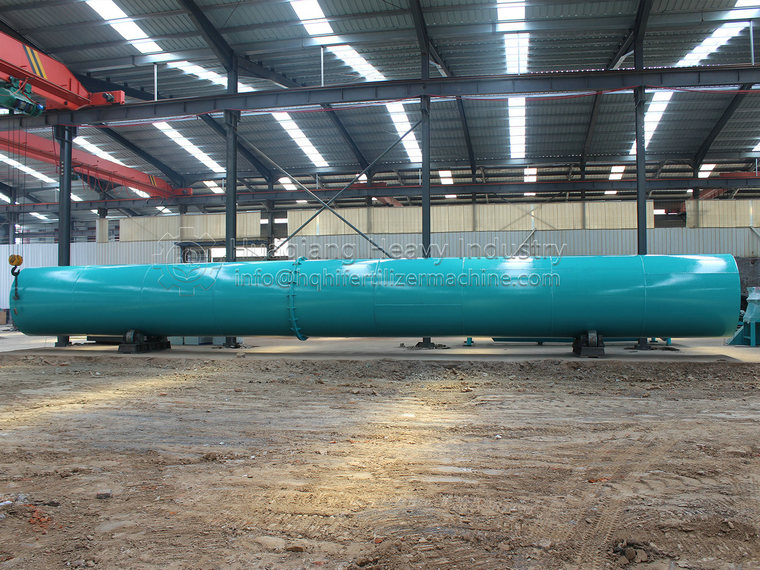In the organic fertilizer production line, the organic fertilizer dryer plays an important role as the “guardian of moisture regulation”, providing precise moisture treatment to the granulation fertilizer particles to ensure the quality and stability of the fertilizer.
The fertilizer granules that have just been granulated usually contain a certain amount of moisture. Excessive moisture can not only cause the fertilizer granules to clump and mold, affecting the storage and use of the fertilizer, but may also reduce the effective ingredient content of the fertilizer. The function of a dryer is to remove excess moisture and control the moisture content of fertilizers within an appropriate range.
The working principle of an organic fertilizer dryer is to use heat exchange to transfer heat to fertilizer particles, causing the water in them to evaporate and be discharged. Common types of dryers include rotary dryers, fluidized bed dryers, and bundle dryers. Rotary dryer is a commonly used type, which consists of a tilted cylindrical cylinder, transmission device, hot air system, and feeding and discharging device. When fertilizer particles enter the cylinder from the feeding port, they continuously roll and advance inside the cylinder as the cylinder rotates. At the same time, hot air is blown in from one end, fully contacting the particles and transferring heat to them, causing the moisture to evaporate rapidly. The evaporated water vapor is discharged from the other end with the hot air, while the dried fertilizer particles are discharged from the discharge outlet.
During the drying process, the control of temperature and time by the organic fertilizer dryer is crucial. Different types of organic fertilizers have different requirements for moisture content and drying temperature. If the drying temperature is too high, it may cause the decomposition and loss of certain nutrients in the fertilizer; If the drying time is insufficient, the expected moisture removal effect cannot be achieved. Therefore, dryers are usually equipped with advanced temperature and time control systems, allowing operators to accurately adjust drying parameters based on the characteristics of fertilizers and production requirements to ensure drying quality.
In addition, modern organic fertilizer dryers are constantly optimized in design to improve drying efficiency and reduce energy consumption. Some dryers use efficient heat exchangers and energy-saving heating equipment, which can fully utilize heat energy and reduce energy waste. At the same time, in order to reduce dust emissions, the organic fertilizer dryer is also equipped with a complete dust removal device, effectively protecting the environment.
As the “guardian of moisture regulation”, the organic fertilizer dryer ensures the quality and stability of organic fertilizers through precise moisture regulation, extends the shelf life of fertilizers, and provides strong guarantees for organic fertilizers to enter the market smoothly and achieve optimal fertilizer efficiency. It is an indispensable and important equipment in organic fertilizer production lines.